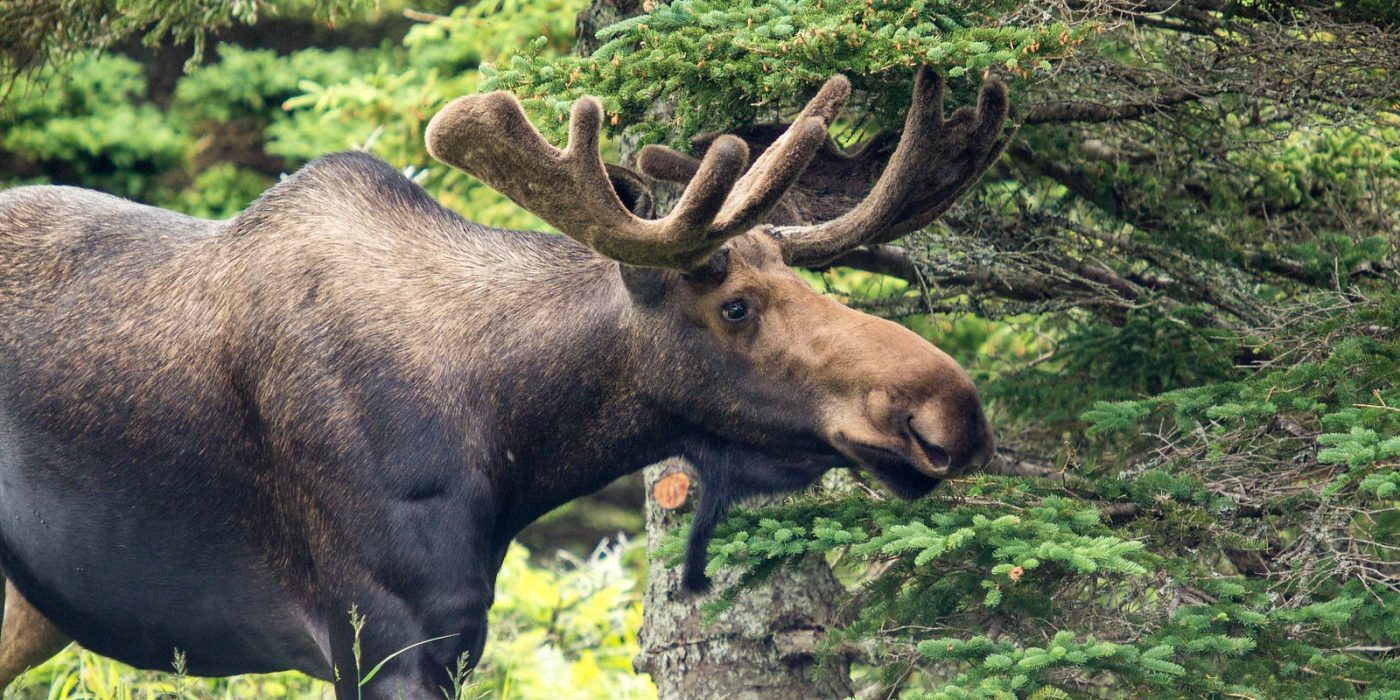Climate News: Millions enthralled by return of annual Great Moose Migration livestream
Television’s greatest mass-streamed moose event has returned for 2025, with millions around the globe hoping to catch a glimpse of Europe’s largest herbivore as it crosses the Scandinavian wilderness.
Den stora älgvandringen, translating to “Great Moose Migration” (or “Great Elk Trek”, as it should technically be known in Europe), has been broadcast by Swedish television company SVT since 2019.
The programme, livestreamed over the course of three weeks, follows moose – a supersized relative of the deer – undergoing their seasonal migration from valleys in the Swedish highlands down to summer grazing pastures.
SVT’s stream keeps a tally displayed of how many of them have crossed the Ångerman that year, and this has never cracked the 90-moose mark
The livestream switches between a range of cameras set up along the Ångerman River, which the moose must cross, and showcases a 24-hour feed of whichever camera happens to attract the interest of the SVT producers at that time.
Sometimes, as the name would suggest, this is moose. More often than not, though, all the programme can offer is the serene quiet of the Scandinavian wilderness. The picturesque shots of vast and idyllic pine forests offer a wealth of animals, from songbirds, to ducks, to the occasional weasel – but not usually the stream’s titular creature.
The much-hyped ‘Kings of the Forest’, though numbering some 300,000 in Sweden, are solitary creatures, only travelling in small groups compared to most of their fellow species of deer. SVT’s stream keeps a tally displayed of how many of them have crossed the Ångerman that year, and this has never cracked the 90-moose mark.

A rare appearance by Swedish television’s greatest star. Image: SVT
That hasn’t done anything to deter the livestream’s fans, however. Online, the show has a zealously devoted following, for whom the three-week event may well be the peak of their year.
One fan, speaking to the BBC, said her television had been on for 16 hours straight watching the programme. Another told the Associated Press he had collected over 150 moose stuffed toys since discovering the programme during lockdown in 2020.
“I feel relaxed, but at the same time I’m like, ‘Oh, there’s a moose. Oh, what if there’s a moose? I can’t go to the toilet!’” he fawned.
This year, the livestream has even been rocked by unusual drama – warmer weather prompted a premature departure for the moose mass-movement, sparking a rush to set up the show’s 33 cameras a week early.
The Great Moose Migration offers only the reassuring presence of an untouched Scandinavian riverscape
“They’re waiting for us,” producer Stefan Edlund told SVT, somewhat eerily. “We’ve had to adjust. But it should be okay.”
Edlund’s team of 15, based in Umeå, 250 miles south of the Arctic Circle, will now spend until 4 May running the programme remotely, employing night-vision cameras, a drone, and over 20,000 metres of cable to keep the stream going non-stop.
The fruit of their labour is a show whose viewership has increased steadily since its debut six years ago, when some million people tuned in to catch the thousand-year-old phenomenon. Last year, this number had climbed to nine million, and could well reach even dizzier heights this time around at a time when the simplicity of Norse nature offers welcome respite from the global news cycle.
So-called ‘slow TV’ is attractive precisely because of how uneventful it can be, experts posit. Far from flashy, intense, and nerve-racking drama, the Great Moose Migration offers only the reassuring presence of an untouched Scandinavian riverscape – timeless, silent, and entirely unbothered by such esoteric concepts as global trade wars or democratic backsliding.
Instead, there is only the hushed tones of the river, the whisper of the wind through ancient forest – oh, and moose.

Comments